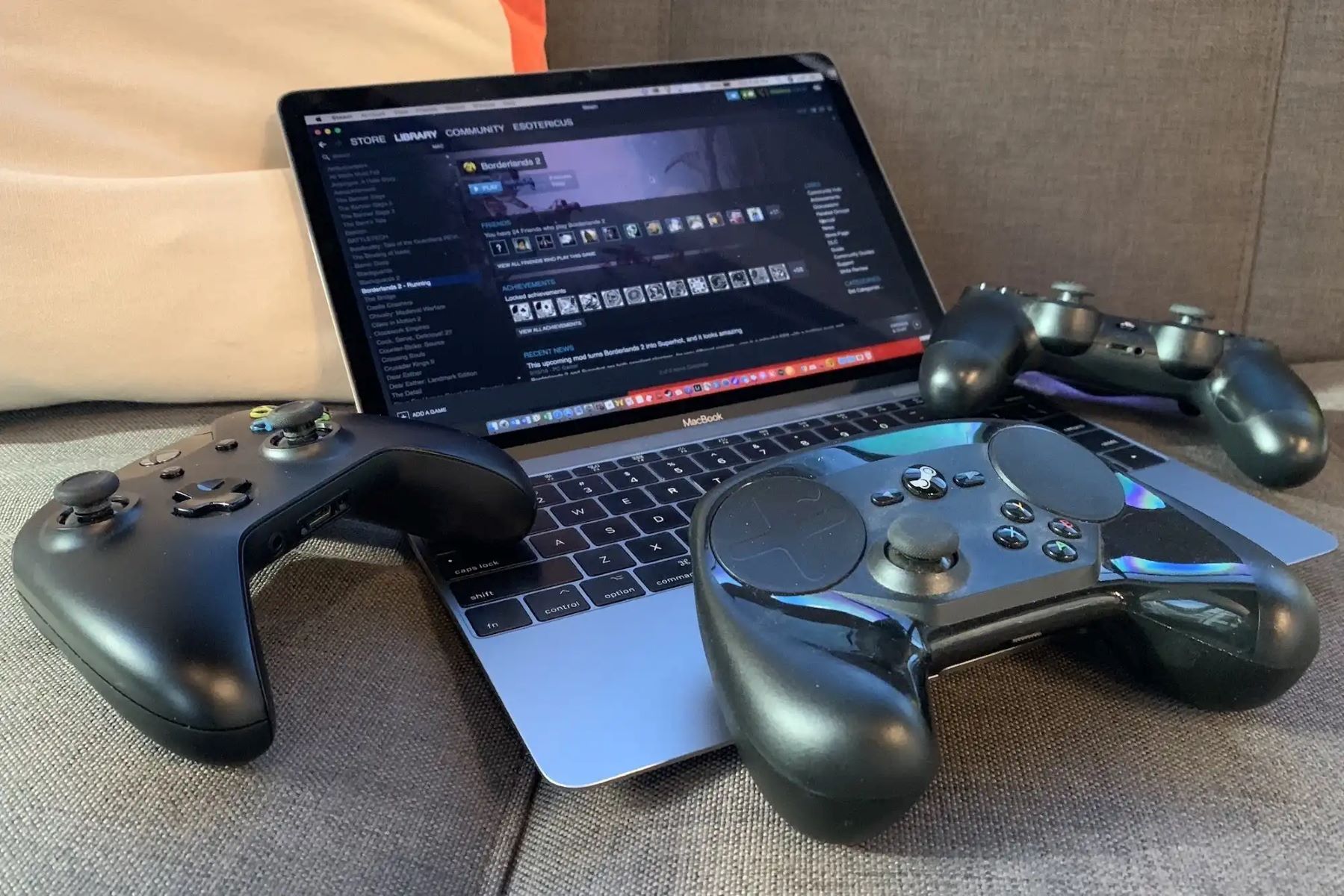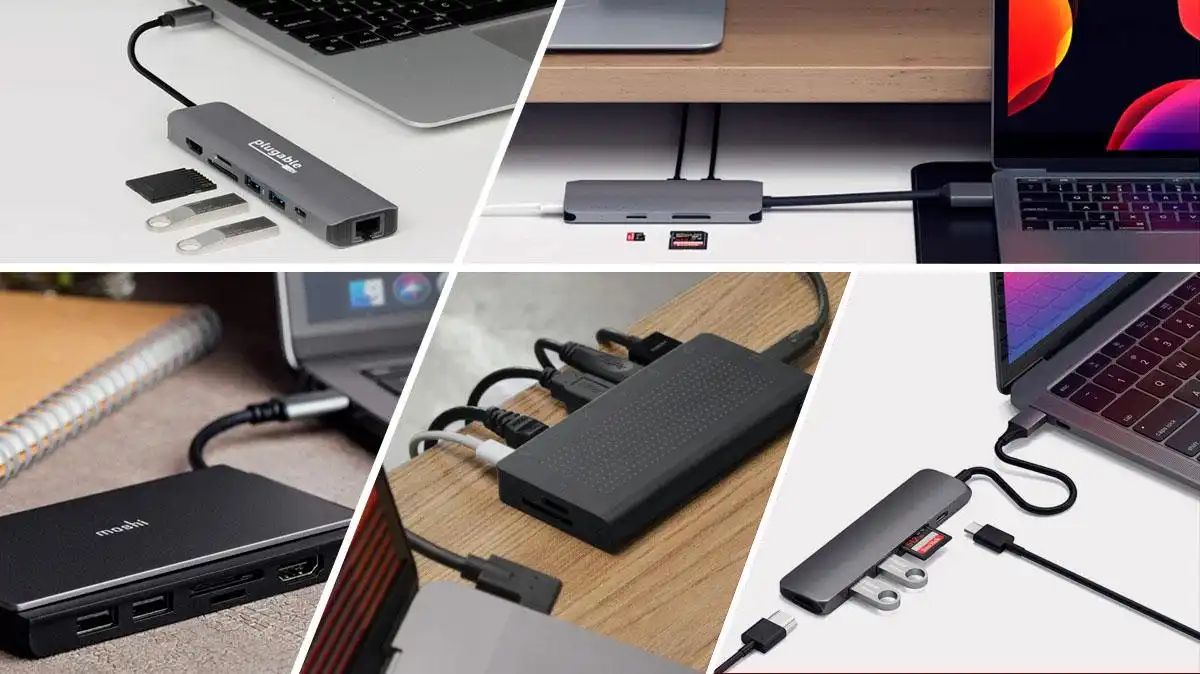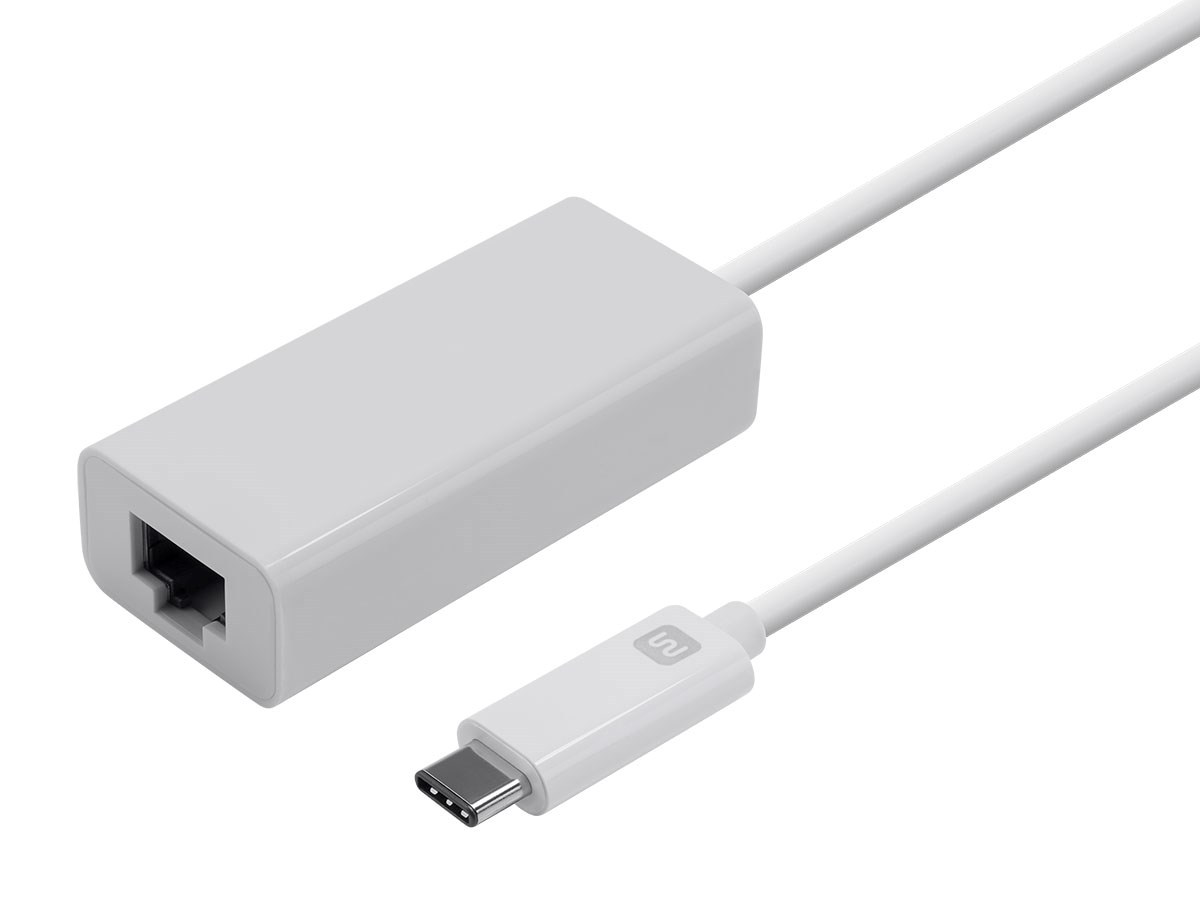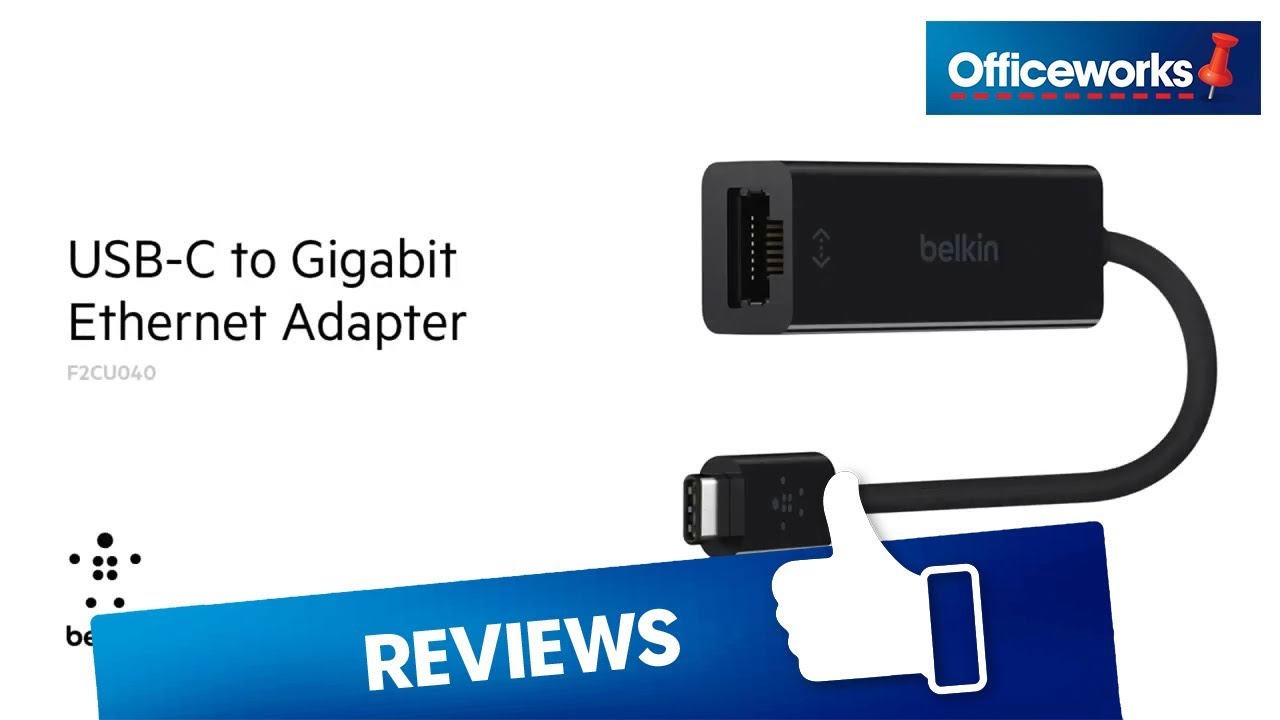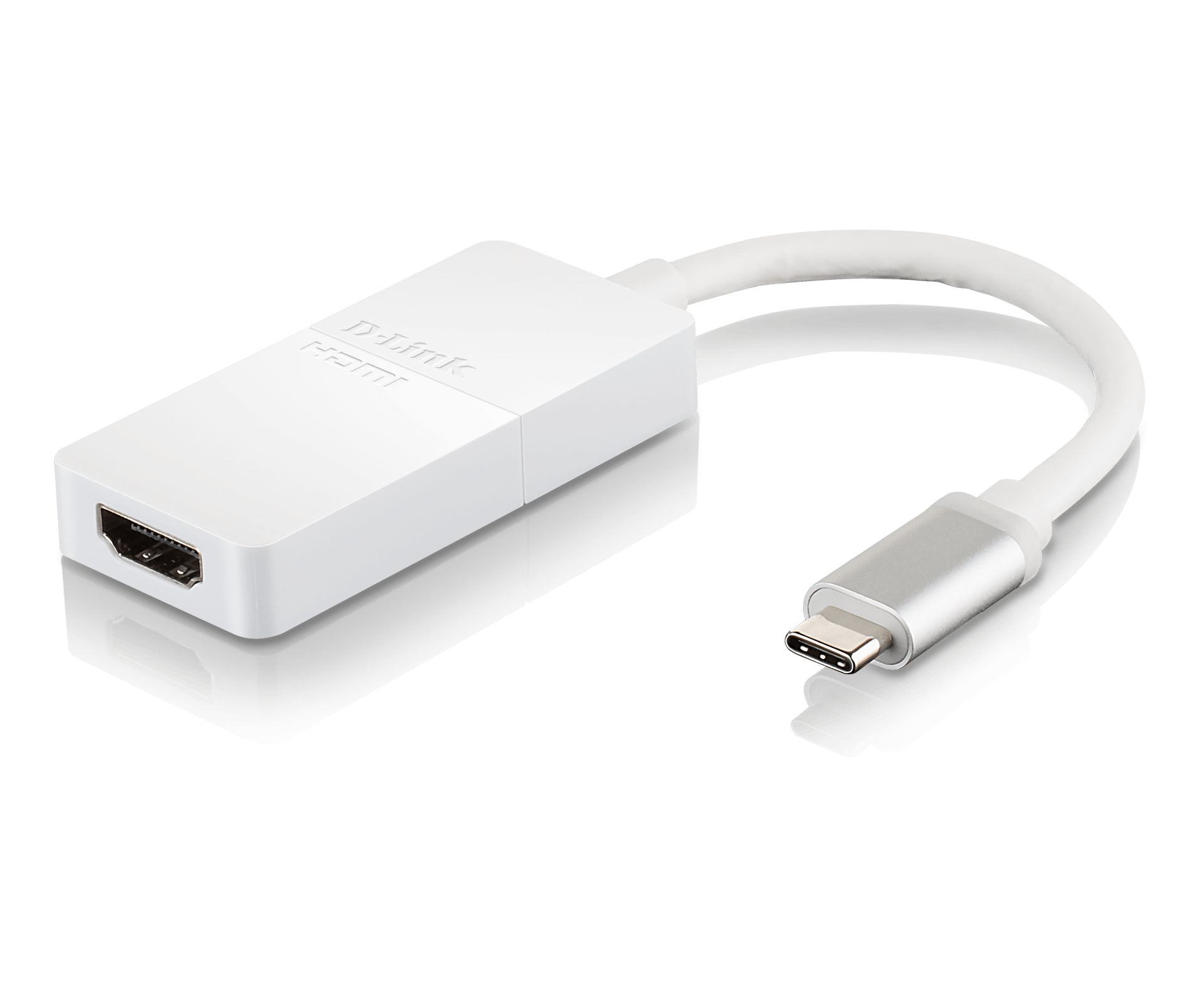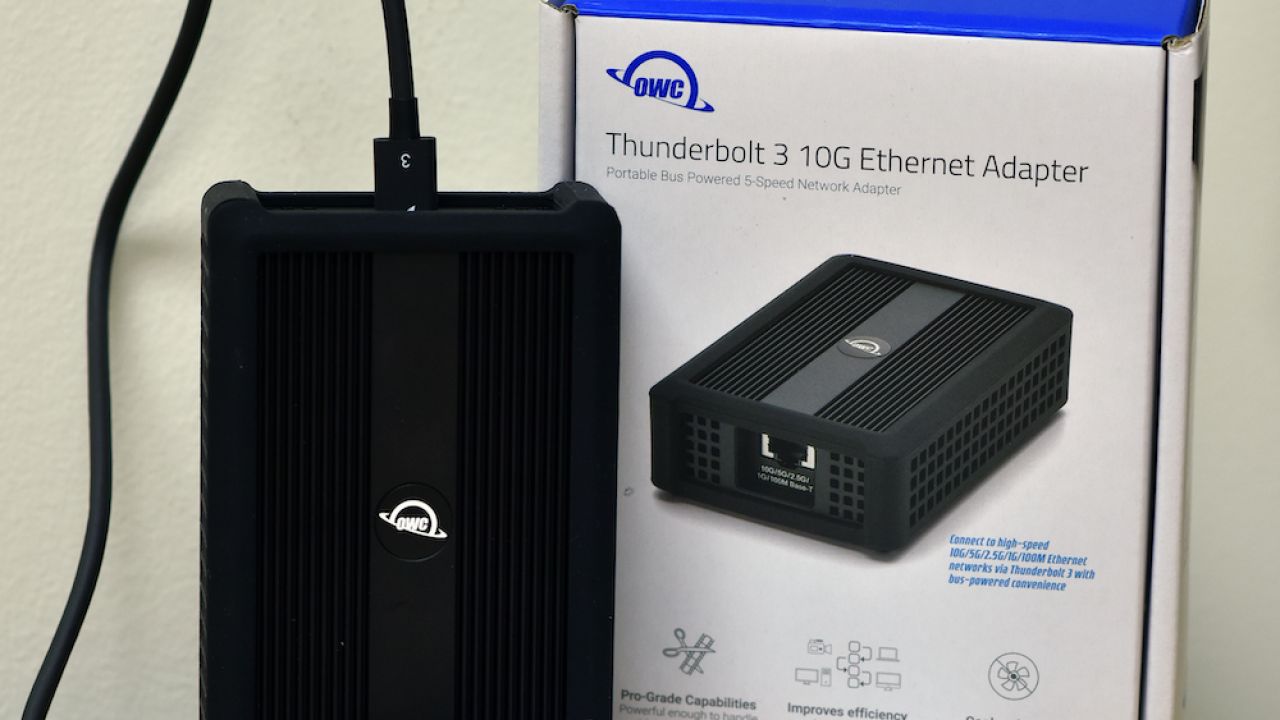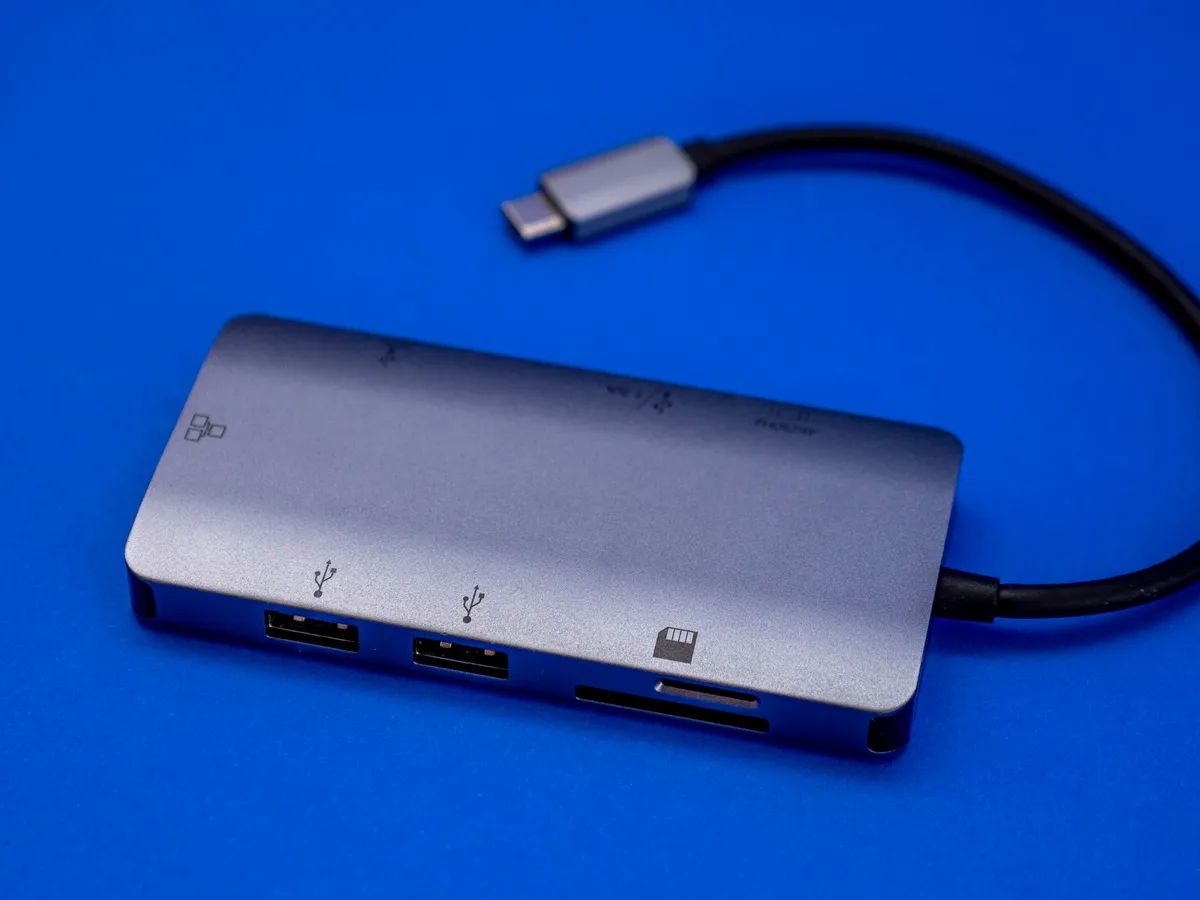Introduction
So, you've got your hands on a shiny new game controller and you're eager to dive into some gaming action on your trusty MacBook Pro. The good news is that connecting and using a game controller on a MacBook Pro is a relatively straightforward process, and in this guide, I'll walk you through the steps to get you up and running in no time.
Whether you're into fast-paced racing games, immersive RPGs, or adrenaline-pumping action adventures, a game controller can greatly enhance your gaming experience on your MacBook Pro. With its intuitive design and ergonomic feel, a game controller offers a more tactile and responsive way to interact with your favorite games, providing a level of control and precision that can elevate your gameplay to new heights.
In the following steps, I'll show you how to check the compatibility of your game controller with your MacBook Pro, how to connect the controller to your MacBook Pro, how to configure the controller for optimal performance, and how to test the controller to ensure everything is working as it should.
Now, let's dive into the exciting world of gaming on your MacBook Pro with a game controller by your side. Get ready to immerse yourself in a gaming experience like never before as we embark on this journey together. Let's make sure you're all set to plug in, play, and conquer the virtual realms with ease and precision.
Step 1: Check Compatibility
Before delving into the process of connecting your game controller to your MacBook Pro, it’s crucial to ensure that the controller is compatible with your device. While many game controllers are designed to be universally compatible, it’s always wise to double-check to avoid any potential compatibility issues.
Start by verifying the type of game controller you have. Whether it’s a popular console controller, a third-party gamepad, or a specialized gaming joystick, it’s essential to confirm that it is compatible with macOS, the operating system used by MacBook Pro. Most modern game controllers are compatible with macOS, but it’s best to consult the manufacturer’s specifications or support documentation to confirm compatibility.
Additionally, check if your MacBook Pro has the necessary ports to connect the game controller. Some controllers use USB-A or USB-C connections, while others may require Bluetooth connectivity. Ensure that your MacBook Pro has the corresponding ports or supports Bluetooth connectivity to establish a seamless connection with the game controller.
If you’re using a wireless game controller, make sure that your MacBook Pro’s Bluetooth functionality is enabled and ready to pair with the controller. It’s also advisable to check for any available driver updates or firmware upgrades for the game controller to ensure optimal performance and compatibility with macOS.
By taking the time to confirm the compatibility of your game controller with your MacBook Pro, you can preemptively address any potential issues and proceed with the subsequent steps confidently. Once you’ve verified the compatibility, you’re ready to move on to the exciting process of connecting your game controller to your MacBook Pro.
Step 2: Connect the Controller
With the compatibility of your game controller confirmed, the next step is to establish a physical or wireless connection between the controller and your MacBook Pro. Depending on the type of game controller you have, there are several methods to connect it to your MacBook Pro.
If your game controller utilizes a wired connection, such as a USB-C or USB-A cable, simply plug one end of the cable into the controller and the other end into an available USB port on your MacBook Pro. Once connected, your MacBook Pro should automatically recognize the controller, and you’ll be ready to configure it for use in your favorite games.
For wireless game controllers that rely on Bluetooth connectivity, begin by activating the Bluetooth function on your MacBook Pro. Then, put your game controller into pairing mode according to the manufacturer’s instructions. Once the controller is in pairing mode, use your MacBook Pro’s Bluetooth settings to locate and pair with the controller. After a successful pairing, your game controller will be wirelessly connected to your MacBook Pro, ready to deliver an immersive gaming experience.
It’s important to note that some game controllers may require specific drivers or software to be installed on your MacBook Pro to ensure seamless connectivity and functionality. If this is the case, refer to the manufacturer’s guidelines and download any necessary drivers or software to enable full compatibility and functionality.
By following these steps to connect your game controller to your MacBook Pro, you’re one step closer to unlocking the potential for enhanced gaming experiences and precise control in your favorite games. Once the controller is successfully connected, you’re ready to proceed to the next step and configure it for optimal performance.
Step 3: Configure the Controller
After successfully connecting your game controller to your MacBook Pro, the next essential step is to configure the controller to ensure that it functions seamlessly with your favorite games. Configuring the controller involves customizing its settings and mapping its buttons to correspond with in-game actions, providing you with a personalized and intuitive gaming experience.
Start by accessing the system preferences or settings on your MacBook Pro and navigate to the “Bluetooth” or “USB” settings, depending on the type of connection used for your game controller. Here, you may find options to customize the behavior of the connected controller, such as adjusting sensitivity, calibration, or button mapping.
If your game controller is recognized as a standard input device by macOS, you may have the option to customize its settings within individual games. Many modern games offer the flexibility to remap controller buttons and adjust sensitivity directly within the in-game settings, allowing you to tailor the controller’s behavior to your preferences for each specific game.
For more advanced customization options, consider exploring third-party software or applications designed to enhance the functionality of game controllers on macOS. These applications often provide extensive customization features, including the ability to create custom profiles for different games, fine-tune sensitivity settings, and even emulate keyboard and mouse inputs for games that offer limited controller support.
By taking the time to configure your game controller to suit your gaming style and preferences, you can elevate your gaming experience to new heights of precision and immersion. Whether it’s adjusting button layouts for comfort or fine-tuning sensitivity for precise control, the ability to customize your controller empowers you to game with confidence and enjoyment.
Step 4: Test the Controller
Once you’ve configured your game controller to your liking, it’s crucial to test its functionality to ensure that it operates smoothly and responsively across a variety of games. Testing the controller allows you to verify that all buttons, triggers, and analog sticks function as intended, providing you with the assurance that your gaming experiences will be free from any unexpected control issues.
Begin by launching a game or gaming application that supports controller input on your MacBook Pro. Choose a game that offers a range of in-game actions and controls, allowing you to thoroughly test the responsiveness and accuracy of the controller across different scenarios.
As you enter the game, take a moment to navigate through the in-game settings to confirm that the controller is recognized and that its inputs are properly mapped. Look for options to customize the controller settings within the game, such as button remapping, sensitivity adjustments, and calibration tools.
Once in-game, take the opportunity to test the controller across various gameplay elements. Experiment with character movement, camera control, combat actions, and any other interactive elements that the game presents. Pay close attention to the controller’s responsiveness, ensuring that each button press and analog stick movement translates accurately within the game environment.
Additionally, if your game controller features vibration feedback or motion controls, engage with game features that trigger these functionalities to confirm that they operate as expected, adding an extra layer of immersion to your gaming experience.
By thoroughly testing the controller across different games and scenarios, you can identify any potential issues or areas for further customization. If you encounter any unexpected behavior or if certain controls feel unresponsive, revisit the configuration settings to fine-tune the controller’s behavior for optimal performance.
Ultimately, the testing phase ensures that your game controller is fully integrated into your gaming setup, providing you with a reliable and enjoyable means of interacting with your favorite games on your MacBook Pro. With a successfully tested and responsive controller, you’re ready to embark on countless gaming adventures with confidence and precision.
Conclusion
Congratulations! You’ve successfully navigated the process of plugging and playing a game controller on your MacBook Pro, opening the door to an enhanced gaming experience that offers precision, comfort, and immersion. By following the steps outlined in this guide, you’ve gained the knowledge and confidence to seamlessly integrate a game controller into your gaming setup, empowering you to conquer virtual realms with ease.
From checking the compatibility of your game controller to configuring its settings and thoroughly testing its functionality, you’ve embarked on a journey that culminates in a seamless gaming experience tailored to your preferences. The ability to connect and customize a game controller on your MacBook Pro not only expands your gaming possibilities but also provides a more tactile and immersive way to interact with your favorite games.
As you venture into the world of gaming with your newly connected and configured game controller, you’ll discover the joy of precise control, fluid movements, and heightened responsiveness that elevate your overall gaming experience. Whether you’re navigating open worlds, engaging in intense battles, or embarking on epic quests, the game controller serves as a versatile tool that enhances your enjoyment and mastery of the games you love.
Embrace the freedom and flexibility that a game controller brings to your gaming endeavors, and don’t hesitate to explore additional customization options and advanced features to further tailor your gaming experience to your preferences. With your game controller seamlessly integrated into your MacBook Pro gaming setup, you’re poised to embark on countless thrilling adventures, conquer formidable foes, and immerse yourself in the captivating worlds of your favorite games.
So, with your game controller at the ready, prepare to embark on a gaming journey filled with excitement, precision, and endless possibilities. Let the immersive experience of gaming with a controller on your MacBook Pro transport you to new realms of enjoyment and mastery.







